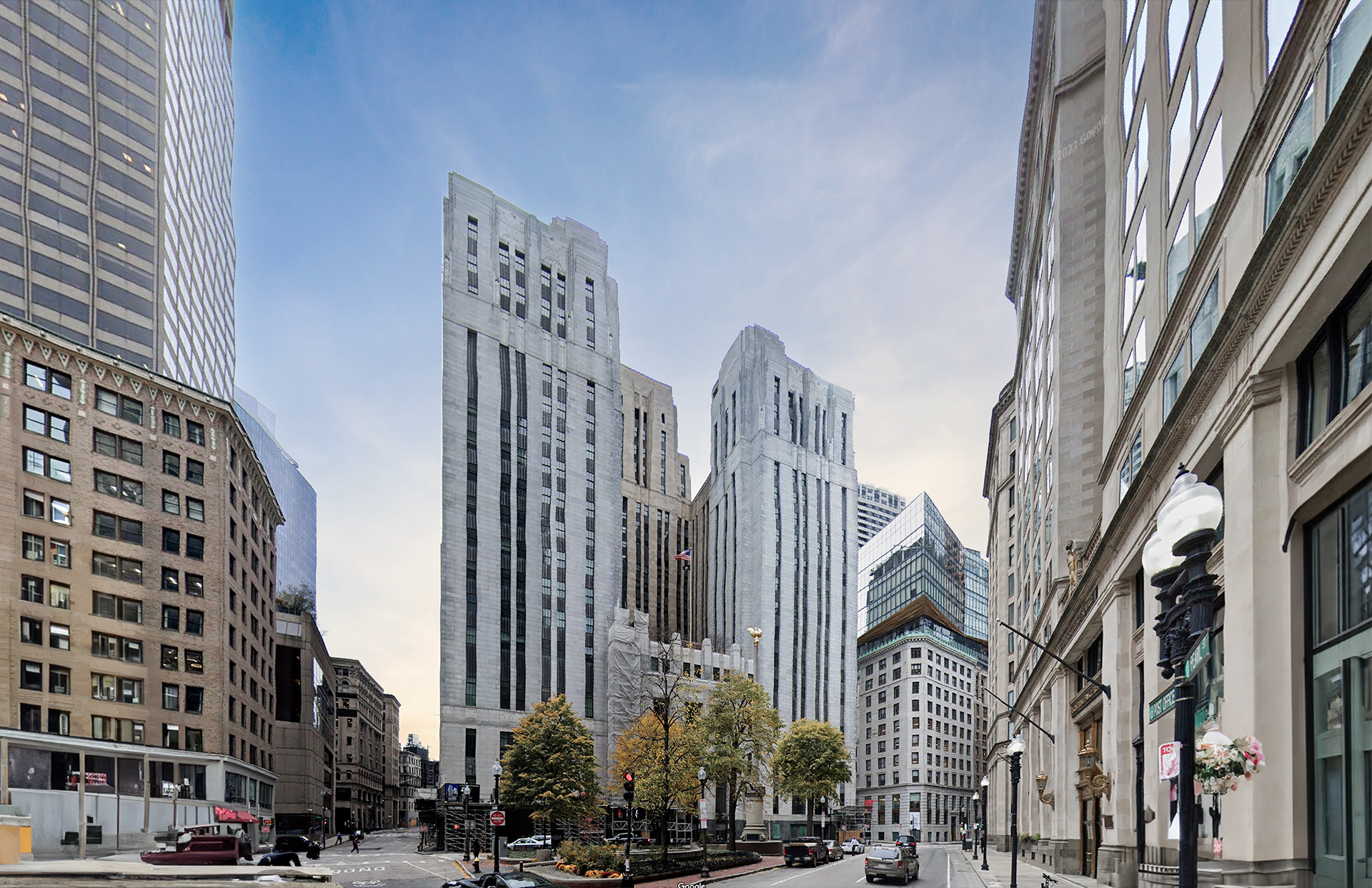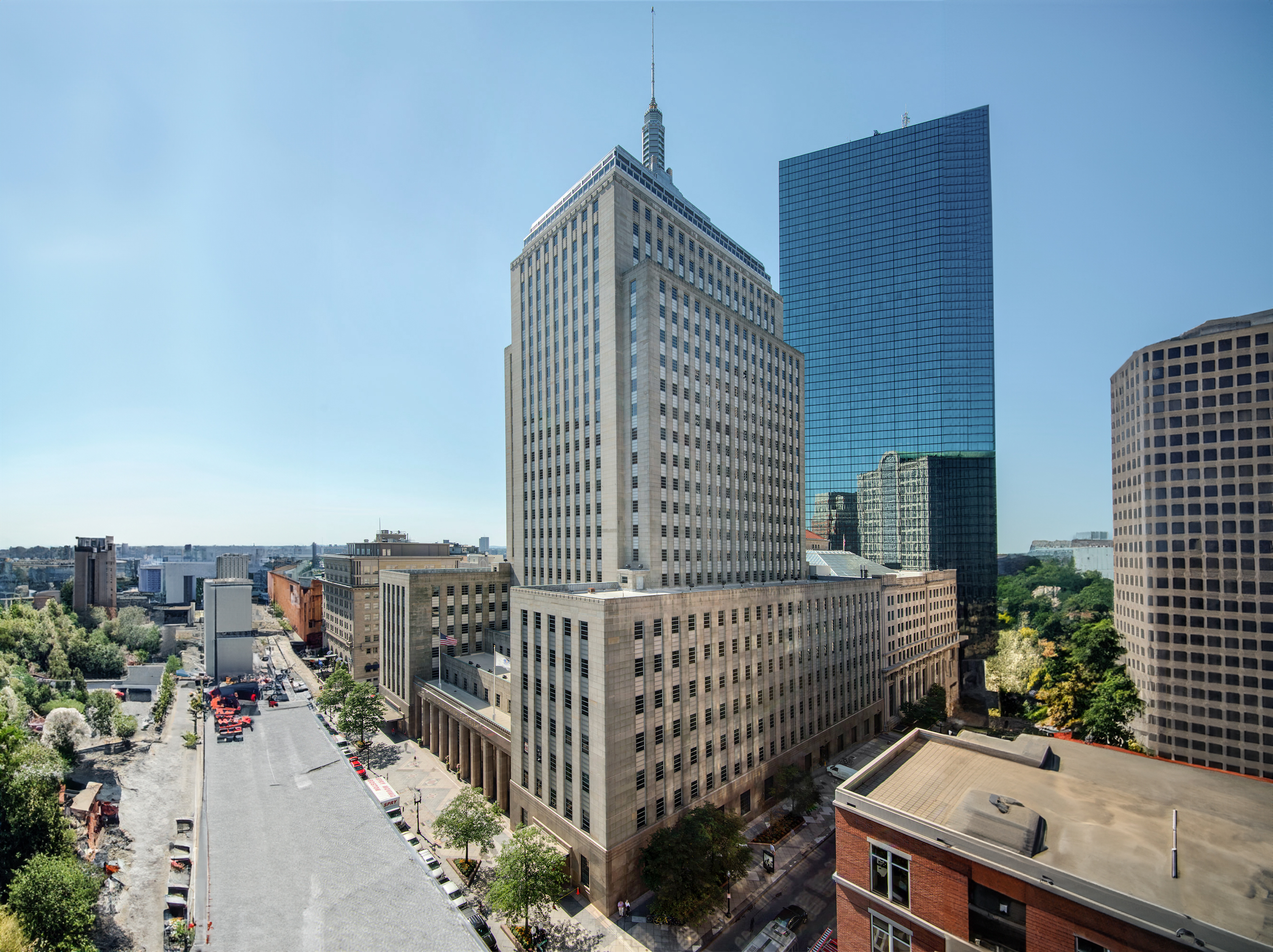The United Shoe Machinery Corporation Building is an Art-deco skyscraper designed by Parker, Thomas & Rice, and built between 1929 and 1930 in Boston, MA.
Its precise street address is 160 Federal Street, Boston, MA. You can also find it on the map here.
The United Shoe Machinery Corporation Building is a structure of significant importance both for the city of Boston and the United States as a nation. The building embodies the distinctive characteristic features of the time in which it was built and the Art Deco style. Because of that, the United Shoe Machinery Corporation Building was officially included in the National Register of Historic Places in 1980, and was also included in the Boston Register of Historic Places in 1983.




